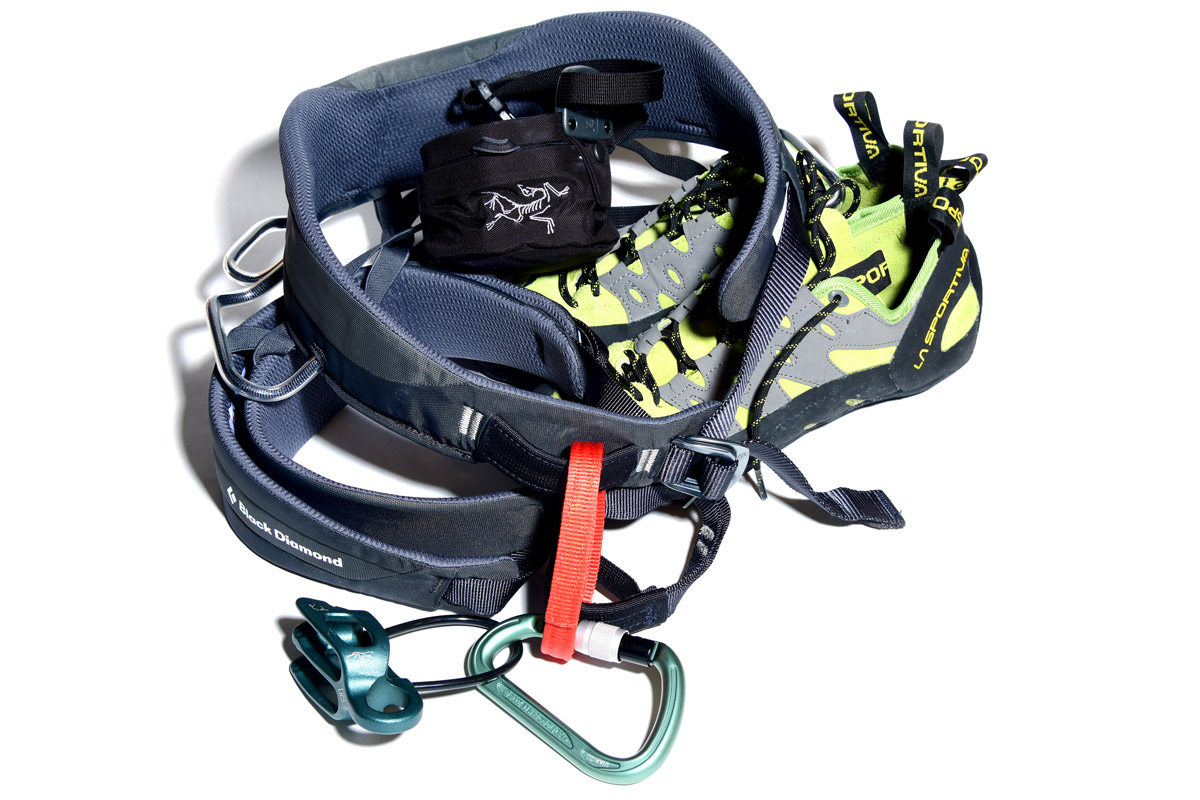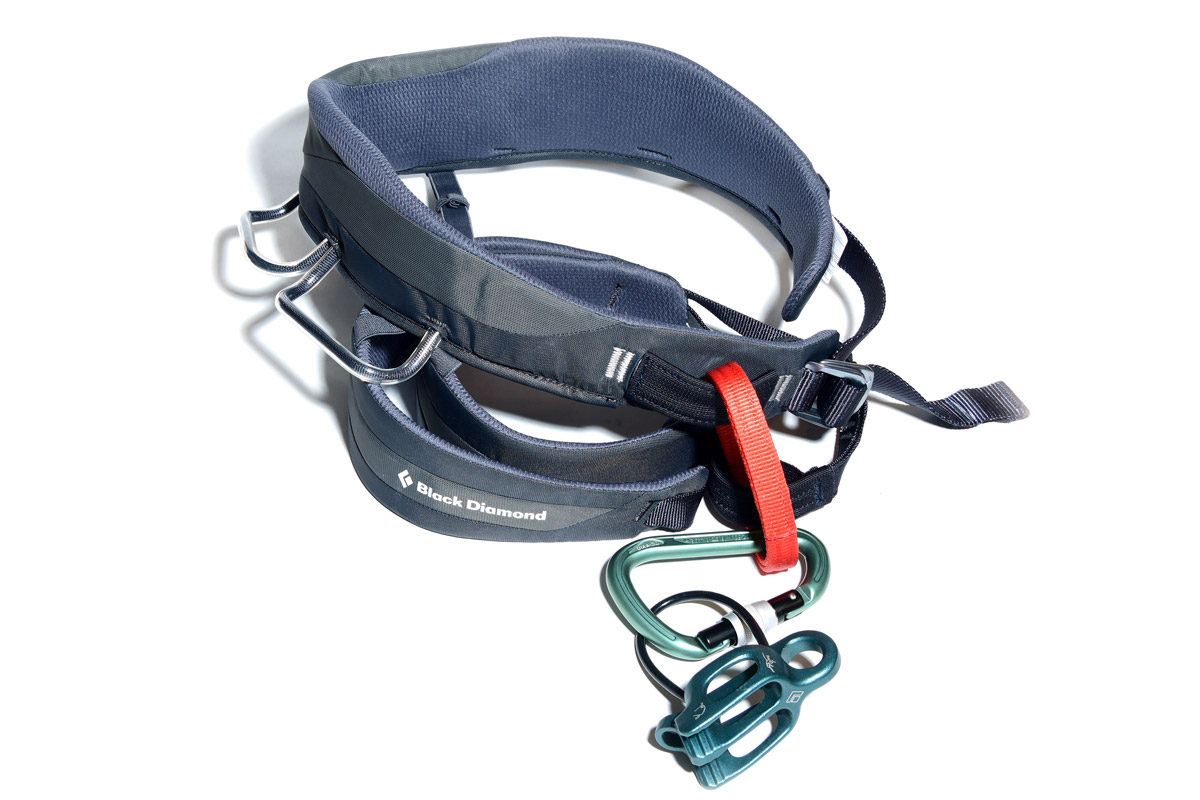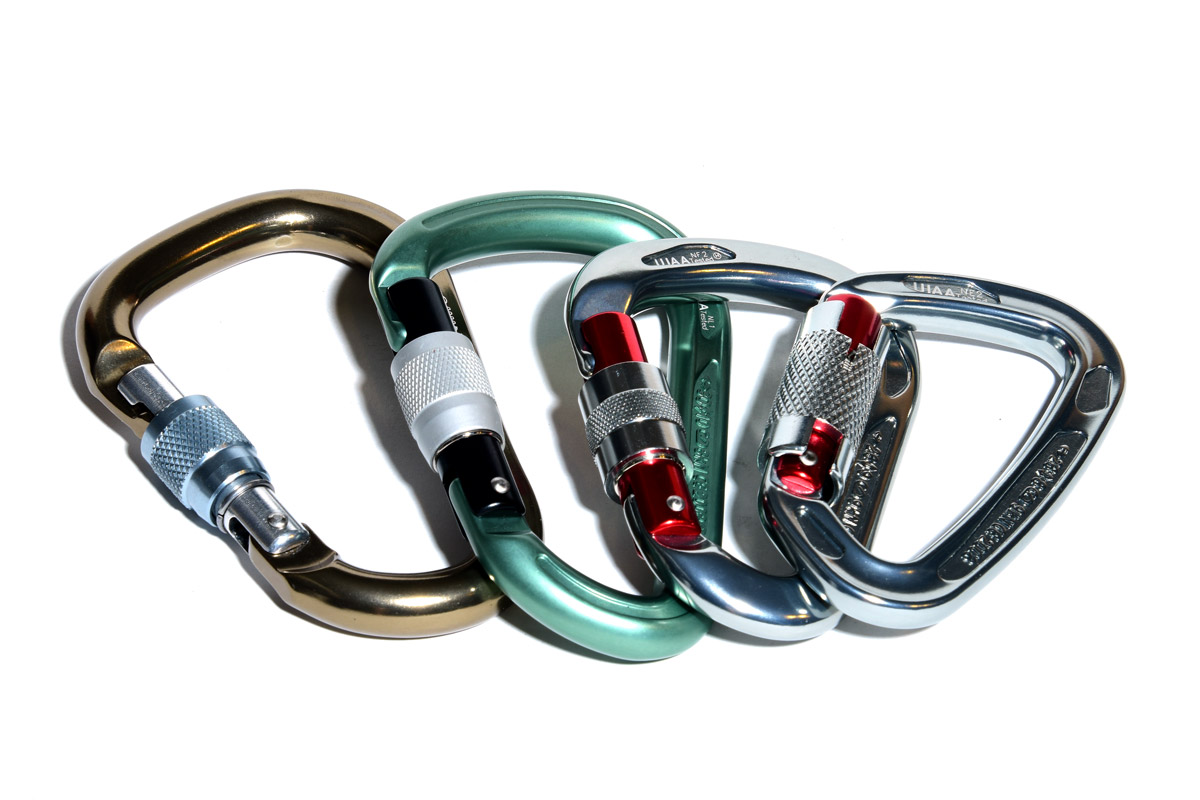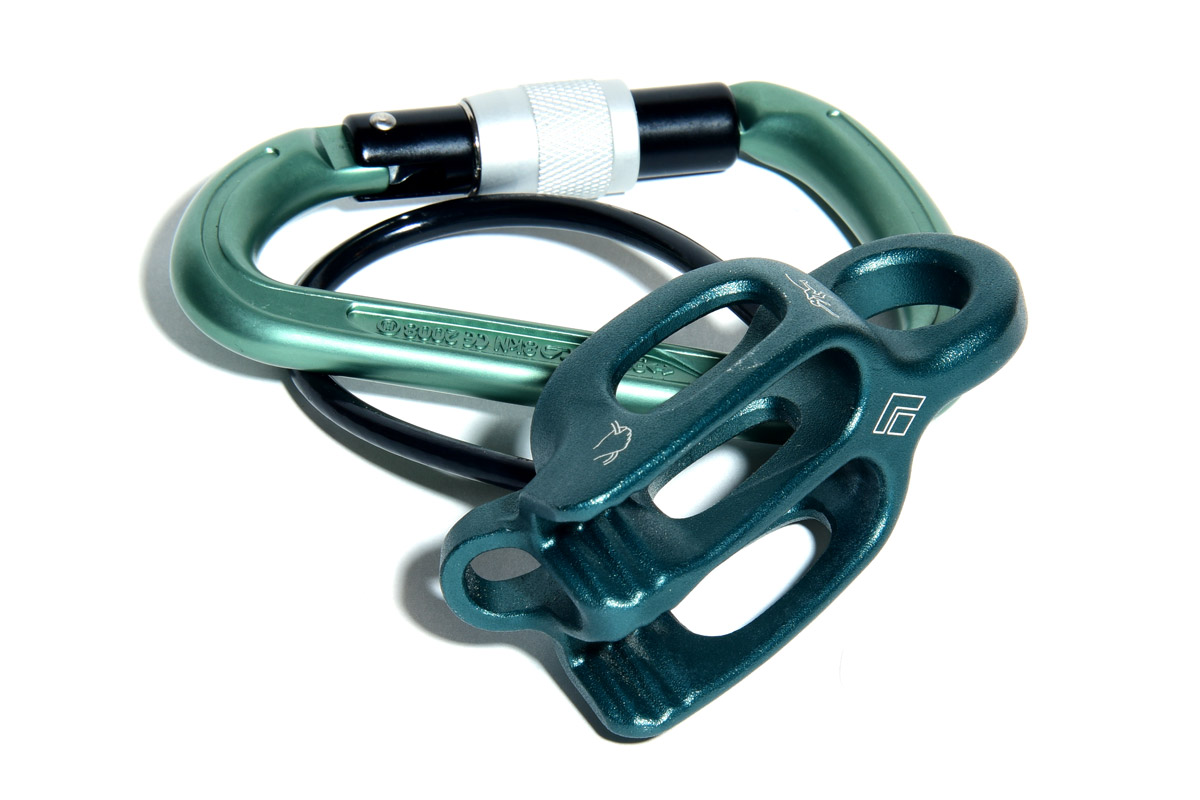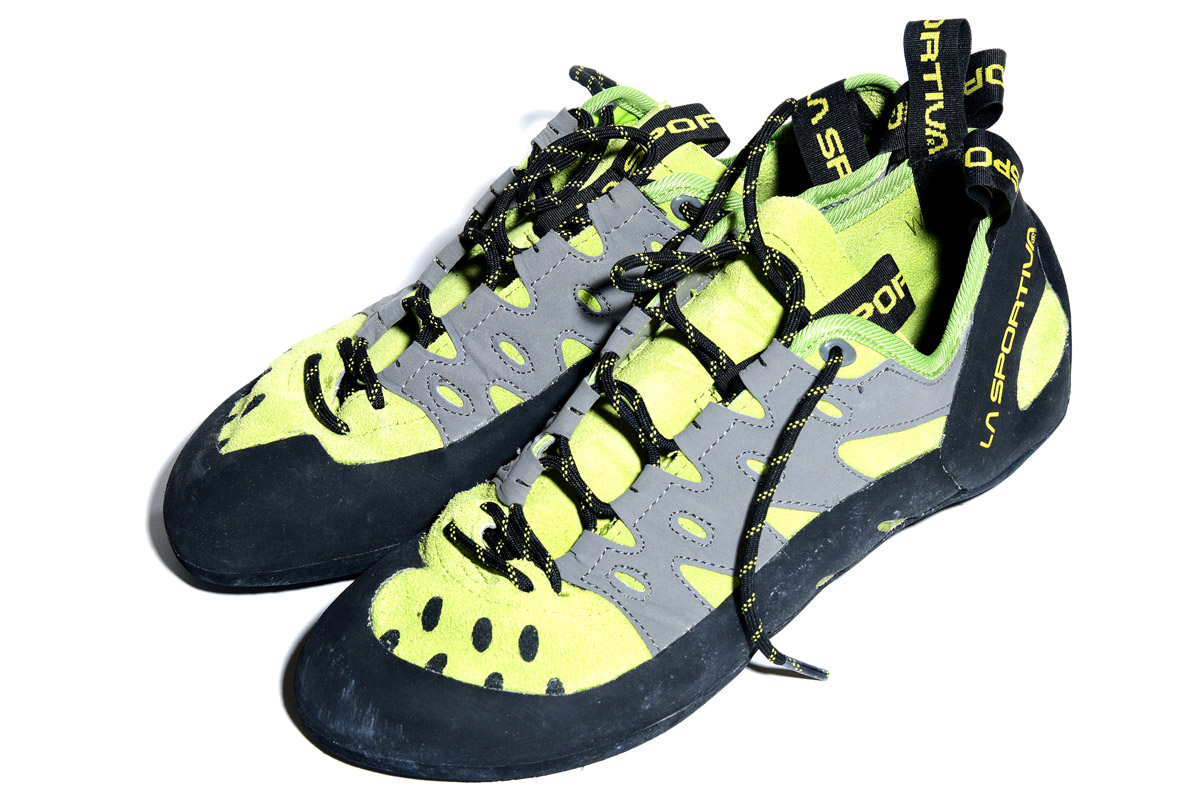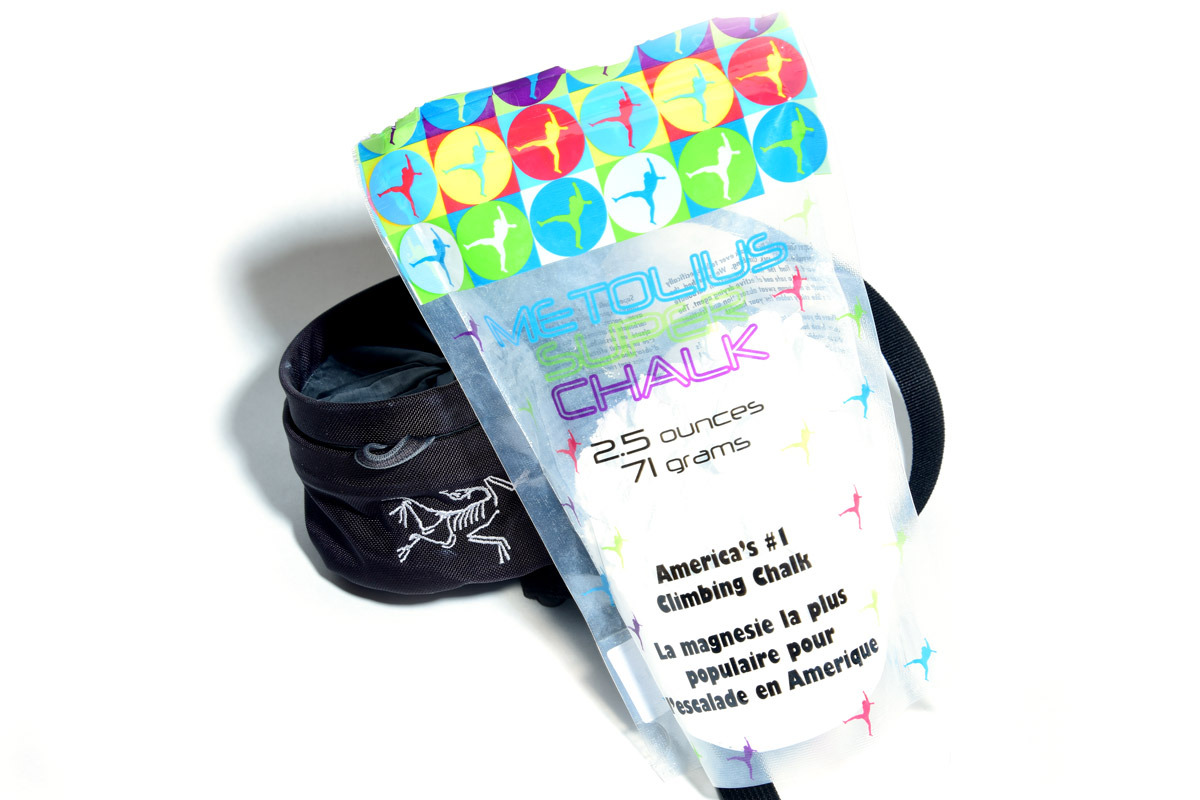I recently started getting into rock climbing (top rope climbing), only indoor right now. I’d done it a few years back but never really got into it, but now I’m jumping in with both feet, so to speak.
You can rent gear, but you really will want your own gear. It lets you get more familiar with everything, something very important when your hanging 30′ off the ground and it will save you money if you plan on climbing a lot. You should definitely rent, if it’s an option first to see what you like, but eventually, it’s definitely worth buying, especially if you are planning on getting out of the gym eventually.
I ended up just buying some stuff, and did a TON of research, and I’m quite happy with what I ended up getting, but I did buy a lot of extra stuff in trying to figure out what I needed/wanted. I’m also a gadget guy, so the extra stuff (mostly carabiners) I’ve found uses for so it wasn’t too bad. But after a couple weeks of having and using the basics, this is what I could have ended up with and been completely happy.
You
First things first, you are the central part of all of your gear. If you’re in bad shape or not mentally ready to learn and problem solve, climbing will be frustrating and difficult. Sure, you will probably be able to get up the easy routes, but as soon as things get a little more difficult everything will get dramatically harder, frustrating and potentially dangerous.
Not only do you need to be able to be physically strong enough to get up the wall, but you need to be mentally able to problem solve on the spot. No, you don’t need to be able to do 100 push-ups and pull-ups (though it doesn’t hurt), but you need to be able to hold on to the wall, and have the hand, arm, and leg strength to do what you need to to navigate the route. A lot of that comes with practice and technique, but you will need to spend some time on the wall and in the gym if you want to get better. Along side of that is the mental aspect, knowing how to twist and turn to be able to reach holds and figure out where you need to place your feet, etc. all comes with practice, but you have to want to learn it.
You also will have to take some time to lean how to tie some knots and remember how to properly communicate and belay, etc. But it’s not hard, you just have to practice and not be afraid to ask for help, or take a class if you need it!
Harness
The harness I ended up getting was the Black Diamond Momentum harness. Overall I’ve been very happy with it. The sizes seem to run a bit on the larger side, so you might want to go try one on somewhere to verify your size, but other than that, the harness has been working great for me. It is comfortable, hasn’t shown any signs of wear yet, and just overall works!
For sizing, I have about a 32″ waist, and I have the medium. A small probably would have fit without any issues, but I’m happy with the medium. When I have things cinched up tight, it’s kind of at the end of how tight you can make things, so definitely if you are smaller than a 32″ waist, get the small.
There are a lot of harness options out there and you can spend a TON of money on them without even trying. So why did I chose this specific harness? Bottom line for me is, if you’re getting into something, I’m a big fan of getting something reasonably priced, but good, and then growing into or out of the gear. This will save you a ton of money if you try something out and then decide it’s not for you, or give you a nice gift for a friend if you are so bad ass that you need the most expensive gear. This harness had good reviews from what I’ve seen, and I like Black Diamond as a company, everything I’ve gotten from them has been good.
Black Diamond also offers a harness, carabiner, belay device, and chalk bag “kit”, that you can take a look at here. This is all good stuff and a good starter kit, but I wanted some different stuff, as I’ll outline later, so I oped to get stuff individually from a few different places.
Carabiner (biner)
There are a lot of different carabiners out there… Ones with wire gates, screw gates, twist gates (twistlock), and even magnetic gates. For top rope you need a locking carabiner, this limits you to screw, twist gate or magnetic gate biners. Basically anything with a locking mechanism.
These locking carabiners are also often refereed to as HMS biners, HMS is an abbreviation for the German term “Halbmastwurfsicherung”, what loosely translates to something like “half clove hitch belay” (according to Google). Basically these are your main carabiners used for attaching the belay device to your harness. You’ll use this every time you are belaying for someone. They are useful for a lot, and are the more expensive of the carabiners, but you need to have at least one for top rope climbing.
I have been using the Black Diamond RockLock Screwgate Carabiner and it’s worked well. I have a few different carabiners, and I really like the Black Diamond and Mad Rock biners… They are reasonably priced, and all work really well.
Don’t get too caught up in the strength of the biners, it’s important to get a “real” and certified carabiner, but 24kN vs 25kN vs 30kN wont make too much of a difference in a gym condition and if you are doing things correctly. 24kN translates to a load of about 5,395lbf. That’s a static weight just a touch under the curb weight of a Chevy Colorado pickup truck. The types of loads that carabiners receive are not static, so the calculations are not so simple, but just know that if you’re getting a certified biner and using it correctly, it shouldn’t make too much difference.
Also, the weight of the carabiner wont impact you too much, you probably wont have 50 of them on you when climbing, and 1 oz here or there shouldn’t effect your basic climbing. When you start getting into other types of climbing where you have to carry a lot of gear, the weight can really add up, but for basic gym climbing it wont make a lick of difference.
For the locking mechanism, I personally prefer the old tried and true screw gate biner (what I have pictured/linked above). They are easier for me to work with one hand if need be, and they just seem to work. I’ve messed with some twist lock models and they are good, and it’s nice that they auto lock when you close them, but I have a hard time manipulating them with one hand. Then there is the magnetic locking biner… These also automatically lock when you close them and are much easier to work with one hand. I’ve not spend more than a couple hours messing with one of these, so I cant say if they are great or not, but these are the “new” thing out, so they are more expensive, like a lot more expensive. They do have some cool factor though. Check out the Magnetron from Black Diamond if you are interested in one.
The two main brands that you will find online (that I kept running into) and are probably the best priced will be Black Diamond and Mad Rock. I think they both make a solid product and you can’t go too wrong with any of them.
Belay Device
Just like carabiners, there are a TON of different belay devices on the market. Most are simple non-mechanical devices, but there are also “automatic” devices like the GriGri from Petzl or the Cinch by Trango. The nice things about these devices is they will lock even if your belayer drops the rope or is incapacitated. But they are more expensive and there is a bit of a barrier to entry learning how to use the device and a higher cost.
For an entry level belay device, I would look towards Black Diamond again, I picked up the Black Diamond ATC Guide Belay Device. The reason I went with this device is because I liked the added functionality it has for guiding and varying belay techniques. Stuff that I hope to grow into as I move out of the gym. But it’s no means required. Any of the standard belay devices or kits that Black Diamond offers would work perfectly fine, and be lighter.
So you generally have your preference in belay devices, the Black Diamond ATC or ATC-XP would be a good choice and are very reasonably priced. Or if you feel like spending some money, go for an automatic belay device, but I suggest starting out with the basics first, then moving into something more advanced.
Shoes
Climbing shoes are another very important part of your gear. They provide added traction on the rocks and are designed to help you keep your footing.
Because of the nature of climbing shoes, and shoes in general, I definitely suggest you go to a local store like REI or some similar outdoors store that carries climbing shoes and try on some pairs. Every brand has slightly different sizing, etc.
Some things to note about climbing shoes, first and foremost, you don’t want them to be loose. They need to grip your foot so you don’t slip around in them. Also, most shoes out there stretch, so you want them to be a little tighter at first so you can break them in. From what I’ve found, most climbing shoes are for people with really narrow feet, so if you’re like me and have a wider foot, you’re going to need to try on a few pairs to see what will work.
The pair of shoes I ended up getting was a pair of La Sportiva Tarantulace shoes. They were the most reasonably priced and fit the best. I wasn’t going to spend $160 on a pair of shoes to start out with.
As far as fit, for me, the La Sportiva brand shoes seem to be pretty true to size, I wear a 10 or a 10.5 in most common shoe sizes, and that translates to a 43. They fit well and are breaking in nicely. Because they are lace ups, so I’m not too worried about stretch as I can tighten them down quite a bit, but often people say to size down 1 to 1.5 shoe sizes. For me that doesn’t work because of how my foot is, the widths would fit fine, but everything else would be way too loose.
All of this is why it’s important to try on some different shoes and see what works for your feet. Everyone is different and can handle different levels of uncomfortable. And until any climbing shoe is well broken in they will be uncomfortable, just figure out how uncomfortable you can deal with being.
Chalk and Chalk Bag
Another things you are really going to want is some chalk and a chalk bag. This is especially important if your hands sweat a lot.
Most chalk bags are pretty simple bags that come with either a belt or a clip that allows you to climb with the bag as well as some method for “closing” the bag to keep the chalk inside the bag when transporting it.
There are also large chalk buckets used for bouldering that you don’t carry with you when climbing. So if you want something that you carry with you (this is what most people use) then make sure you are looking at the right thing.
For me, I really wanted to get a chalk bag that sealed closed really well, this was more so just to keep chalk mess out of my car and house. I’ve seen more than a little chalk dumped out coming to and from the gym because a bag wasn’t closed enough, etc.
The only bag that I found that really fit the bill was the Arc’teryx Aperture chalk bag. This bag uses a twisting system that compresses the bag and really does seal the bag completely. And yep, I filled up the bag with chalk, sealed it up and then flipped it upside down over my carpeted floor and nothing spilled out.
The Aperture chalk bag comes in two sizes, small and large. I opted for the small size since I could fit my hand in the bag without any issues. If you want to be able to fit both hands in your bag at the same time, or have very large hands, you may want to opt for the large. The small is really quite small, but for me it works. I also don’t carry a ton of chalk so the compact size works all that much better as it saves space.
For chalk, I’ve been using Metolius chalk, and I can’t say anything bad about it. I’ve used a couple other types briefly and it all seems to work the same for me. So I’d say just get what you can find for a good price. A small 2.5oz bag of chalk will last you a while if you are not a crazy over chalker, and wont cost more than a few bucks.
Also, for chalk they sell chalk socks, something for you to put the chalk inside so it’s less prone to spilling all over the place and keeps the dust down. Something that is nice in the gym (also some gyms require it, so I’ve been told). You can buy one if you want, but I simply made one out of an old (washed) sock that i filled with chalk, cut down to size and tied closed with a little bit of rope. It works well for me and is less chalky then most other things I’ve seen and works great since I don’t like a ton of chalk.
Final Thoughts
Climbing is a lot of fun, a great workout, a good way to get out to nature and is just overall a good time. It does comes with inherent risks and costs that can be a barrier to entry, but don’t be deterred. There are a lot of friendly people who would love to share and help you along with the sport. The key is finding people that you mesh with as well as are able to learn and communicate with. Climbing is very personal and introspective at time, but you need another person to help and be there for you, so it’s also quite social.
In my mind it has a great mix of physical, mental and social involvement and is well worth trying out for anyone, especially if you are into gadgets. Climbing has no shortage of gadgets, that is for sure.
So if you keep your eye out, shop around, and are not fixated on the “best” and most expensive gear, you can get into climbing, see if you like it and maybe make some new friends in the process.
For gear, some of the best places I’ve found online are of course Amazon and Backcountry.com. If you have another place you love, let me know in the comments so I can check it out!
I’m looking forward to doing a lot more climbing, eventually getting out of the gym and getting even more gadgets!
Have any questions or comments, please don’t hesitate to let me know!
